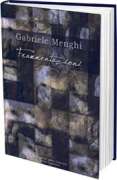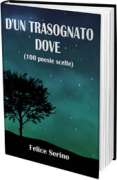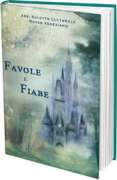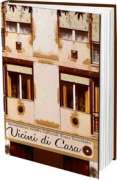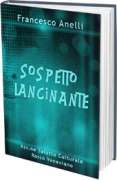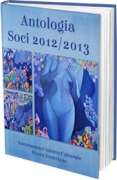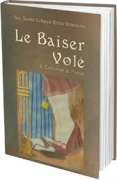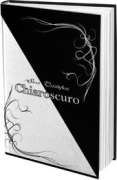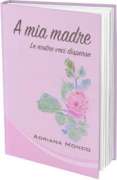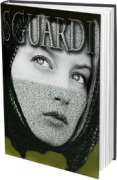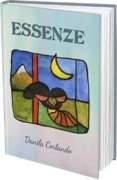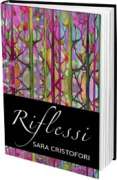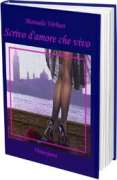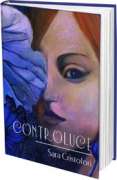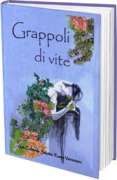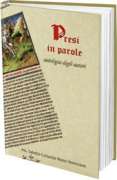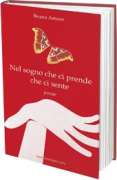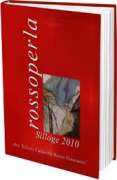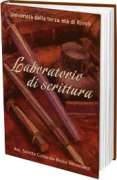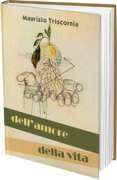
Wolfgang Amadeus Mozart
(1756-1791)
Il Requiem di Mozart
Un mistero che attende oltre la soglia della vita
di Oreste Bossini
Il Requiem di Mozart è un tema spinoso, irto com’è di punti interrogativi e di interpretazioni controverse. Fissare un’opera d’arte in un’immagine precisa costituisce quasi sempre un azzardo, che gli stessi autori cercano spesso di evitare, tornando sul testo per aggiustare qualche gamba zoppa del tavolo, come diceva Verdi. Quando si tratta addirittura di dar voce a un capolavoro incompiuto, qual è il Requiem appunto, i dubbi e gli interrogativi si moltiplicano all’infinito. Incompiuto, sì, ma fino a che punto non sappiamo. Il Requiem era stato commissionato a Mozart da un nobile di provincia appassionato di musica, Franz von Walsegg zu Stuppach. Nel luglio 1791 un incaricato del conte aveva sollecitato il lavoro, ancora da portare a termine. Mozart però non doveva cercare di conoscere l’identità del committente, per il motivo che questi aveva la debolezza di far passare per proprie le musiche che amava dirigere con la sua orchestra. Forse accadde proprio questo il 14 dicembre 1793, quando Walsegg eseguì per la prima volta il Requiem in pubblico, nella Chiesa di Neustadt a Vienna, in occasione dell’anniversario della morte della moglie. L’ipotesi però solleva parecchi dubbi. È difficile credere che un artista come Mozart, ben consapevole del proprio valore e della propria posizione, abbia potuto cedere i diritti d’autore, per così dire, di un’opera tanto importante e tanto impegnativa. E non è neppure immaginabile che un amateur di provincia, per quanto abbagliato dalla vanità, fosse realmente convinto di far credere sua una musica di quel livello. Il progetto era rimasto indietro per l’accavallarsi di impegni importanti come La clemenza di Tito e Il flauto magico. Mozart non fece in tempo a finire la musica del Requiem. Il 5 dicembre morì, lasciando un fascicolo manoscritto in particella (le linee vocali e qualche sintetica indicazione musicale) e forse altri appunti sconosciuti. La vedova, Constanze, fece in modo che il lavoro fosse ritenuto compiuto, in modo che il committente versasse l’onorario pattuito. In realtà Constanze mise al lavoro sul materiale rimasto gli allievi più fedeli dell’entourage di Mozart: Joseph Eybler, Franz Freistädler e soprattutto Franz Xaver Süßmayr. Qual è il peso del loro lavoro, di preciso non sappiamo. Di sicuro il Requiem costituisce un’opera di bottega, per così dire, frutto di un artigianato collettivo caratteristico di un’epoca intera. L’epoca romantica immediatamente successiva, forgiando l’idea del genio, impedì di venire realmente a capo della controversa questione delle attribuzioni, offuscando la verità per creare la leggenda. Quel che importa, però, non è la mano che ha scritto la singola nota, ma la strategia poetica del Requiem. Di Mozart è l’idea della morte come “sorella e amica dell’uomo”, del ciclo eterno della rinascita, del mistero (e non della punizione) che ci attende oltre la soglia della vita. Questo è il Requiem che parla ancora a noi, nel nostro tempo. In ciò consiste pienamente il suo essere un’opera di Mozart.
fonte: Sistema musica

Biography
Born in Salzburg, Austria on Jan. 27, 1756; full name Johannes Chrysostomus Wolfgangus Gottlieb Mozart; he was baptized as Johannes Chrysostomus Wolfgangus Theophilus Mozart. Mozart is named after his grandfather on his mother's side and after the Saint on his date of birth, Johannes Chrysostomus.
Parents: Leopold Mozart - composer and violinist, concertmaster at the archiepiscopal court, and in 1763, vice-kapellmeister at Salzburg court and Anna Maria Pertl, daughter of Wolfgang Nikolaus Pertl, an official from Sankt Gilgen
Sibling: Maria Anna (Nannerl) Mozart
Age 3: started to play the keyboard
Age 5: started composing minuets
1763-1766 toured Europe with his father and sister played for Louis XV at Versailles and George III in London
1764 wrote his first three symphonies; also met Johann Christian Bach.
By his teenage years, he mastered the piano, violin, and harpsichord.
1768 completed first opera, La finta semplice (The Simple Pretense)
1769-1773 made three trips to Italy.
In Rome, there was a myth that Mozart attended the performance of Allegri's Misere.
He wanted the score but when no one agreed wrote down the music from memory.
1770 Mitridate, re di Ponte (Mithridates, King of Pontus) performed in Milan was Mozart's first major opera.
1772 appointed concertmaster in the orchestra of Archbishop of Salzburg.
During this period, he wrote many sacred works.
-1777 toured with his mother hoping to find a court position; traveled to Mannheim where he met and fell in love with Aloysia Webe
-1778, July Anna Maria Mozart died.
-1779 unable to find a court position, Mozart went back to Salzburg; appointedas court organist to the Archbishop of Salzburg.
-1781 resigned from his position due to increasing tension and disagreements between Mozart and the Archbishop.
Mozart stayed in Vienna instead of returning to Salzburg.
Mozart's resignation and his move to Vienna put a strain in his relationship with his father.
-1782 married Constanze Weber in Vienna's St. Stephen's Cathedral.
After Mozart's death, Constanze married Danish diplomat Georg Nikolaus von Nissen.
In Vienna, Mozart supported his family by performing in public and private, teaching , and composing.
His first opera written after his residency in Vienna, Abduction from Seraglio became a success.
His Works music in three stages:
early 1761-1772
middle 1772-1781
late 1781-1791 best known works
Mozart composed over 600 works including:
21 stage and opera works, 15 Masses, over 50 symphonies, 25 piano concertos, 12 violin concertos, 27 concert arias, 17 piano sonatas, 26
string quartets, and many other pieces.
His style was very unique, unlike many of the musical styles of his time. People did not appreciate his radical music because they did not understand Mozart's complex and extraordinary music. In his later years, Mozart incorporates many musical elements and style from different countries into his works. His late works include three of his most famous operas, The Marriage of Figaro, Don Giovanni, Cosi fan tutte, written in collaborationwith Lorenza da Ponte and his last three church pieces, Mass in C Minor, Ave Verum Corpus, and Requiem. Both the Mass in C Minor and Requiem remain unfinished.
Early Works:
La finta semplice (1768)
Bastien und Batienne (1768)
Mitridate, re di Ponto (1770)
Middle Works:
Missa in C, Coronation Mass (1779)
Late Works:
Idomeneo, re di Creta (1781)
The Abduction from Seraglio (1782)
Mass in C minor (1783)
The Marriage of Figaro (1786)
Don Giovanni (1787)
Cosi fan tutte (1790)
La Clemenza di Tito (1791)
The Magic Flute (1791)
Requiem (1791)
Mozart's Sacred Works
Masses and Kyries
K33 Kyrie in F (1766)
K90 Kyrie in d (1772)
K115 Missa brevis in C (incomplete)
K116 Missa brevis in F
K139 Missa solemnis in c ("Waisenhaus"-1768)
K167 Missa in C ("Holy Trinity"-1773)
K192 Missa brevis in F ("Little Credo"-1775)
K220 Missa brevis in C ("Sparrow"-1773-1777)
K257 Missa in C ("Credo"-1776-1777)
K258 Missa brevis in C ("Piccolomini"-1775)
K259 Missa brevis in C ("Organ solo"-1773-1777)
K262 Missa longa in C (1775)
K275 Missa brevis in B-flat (1773-1777)
K296a-c Mass (fragments-1777-1778)
K317 Missa in C ("Coronation"-1779)
K337 Missa solemnis in C (1780)
K341 Kyrie in d (1781)
K427 Mass in C (1783)
Litanies and Vespers
K109 Litaniae Lauretanae BVM (1771)
K125 Kitaniae de venerabili altaris sacramento in B-flat (1772)
K193 Dixit and Magnificat (1773-1777)
K243 Kitaniae de venerabili altaris sacramento (1773-1777)
K321 Vesperae de Dominica (1779)
K339 Vesperae de solennes de Confessore (1780)
Short Sacred Works
K34 Offertory ("Scande coeli limina")
K85 Miserere (1770)
K86 Antiphon ("Quaerite primum regnum Dei"-1770)
K108 "Regina coeli" in C (1771)
K127 "Regina coeli" in B-flat (1772)
K165 Motet, "Exsultate, jubilate" (1773)
K222 Offertory, Misericordias Domini (1773-1777)
K260 Offertory in D, "Venite, populi" (1773-1777)
K273 Sancta Maria in F (1773-1777)
K277 Offertory, "Alma Dei creatoris" (1773-1777)
K618 Motet, "Ave verum corpus" (1791)
Church Sonatas
K67 Church Sonata in E-flat (1772)
K68 Church Sonata in B-flat (1772)
K69 Church Sonata in D (1772)
K328 Church Sonata in C (1779)
K329 Church Sonata in C (1779)
K336 Church Sonata in C (1779)
1786 The Marriage of Figaro, the first of three operas Mozart collaborated with librettist, Lorenza da Ponte, premiered at the Burg Theater.
1787 became composer of Imperial and Royal Chamber with an annual salary of 800fl. His father, Leopold, died on May 28, 1787. Don Giovanni
premiered in Prague at the National Theater.
1790 Cosi fan tutte premiered at Burg Theater. Mozart declined an
opportunity to compose in London.
1791 composed dance music for the Vienna Court; publishers began to pay fees for the rights to publish his works; appointed assistant to the Cathedral Kapellmeister at St. Stephens with no pay. Mozart was
already feeling ill in Prague while finishing La clemenza di Tito.
Dec. 5, 1791, a few minutes before 1AM, Mozart died of rheumatic fever.
-Associazione Salotto Culturale Rosso Venexiano
-Redazione
-Direttore di Frammenti : P. Rafficoni
-Supervisione Manuela Verbasi
-Wolfgang Amadeus Mozart
-Editing Emy Coratti, Manuela Verbasi
-Immagini e ricerca dal web
- Versione stampabile
- Login o registrati per inviare commenti
- 6053 letture

 Sostieni anche tu il nostro sito
Sostieni anche tu il nostro sito

 le nostre pubblicazioni
le nostre pubblicazioni 
